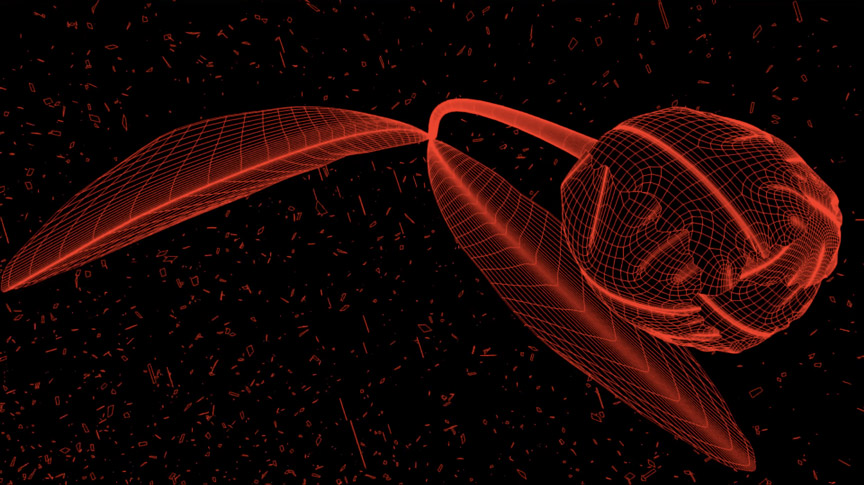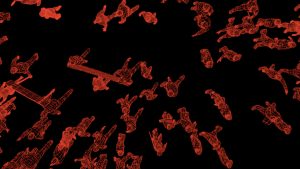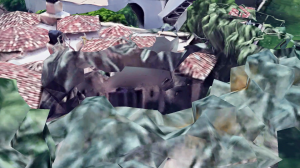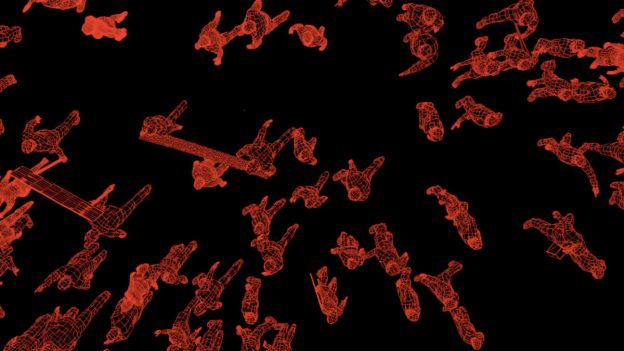
with an excerpt from BEYOND THE NATION STATE I WANT TO DREAM
a video by DORINE VAN MEEL
I had a dream that I was in a used book store and found a book called The Desiccation (maybe it was Decimation) of Coral, which was a kind of almanac documenting where the coral is dying or dead, showing how it is going extinct. As I flipped through the pages, I was stunned to find a drawing or game written in the margin that I recognized as my own writing. I had, presumably, played this game with a friend, a kind of tic-tac-toe with letters, like X‘s and O‘s. His name, which begins with C and was indicated by this letter, was crossed out and replaced with the letter K, indicating someone else. In real life, C and K had had a disagreement and it was as if to say that K won, that K was erasing C, K had decimated C. The dream ended with an air of melancholia around the zero-sum game that made its appearance, though there was a lining of surprise that counteracted its force, as if to stop just shy of melancholia’s certainty and destruction—I still could feel the surprise of having found something of myself in this book which had drawn my attention unwittingly. This feeling lifted the tense or terse air.
Why did I find this book in order to find this image from my past? The dream is prefaced in reality by a series of gifts: I had bought a coral bracelet for a close friend whose last name is Cook. We had found ourselves at some distance from one another lately. I loved this bracelet and had wanted it for myself and half regretted giving it to her. Later I would buy coral earrings for myself, a replacement that I recognized as barely sufficing, which I then lost twice: First, the package never showed up and it was declared lost by the post. Then it was found a month later, at which point I promptly put on the earrings and the coral fell out of one of them that very evening. Lost twice? Or, maybe even lost thrice?

In form, the dream plays with hard and soft sounds associated with c, or rather when the c sounds like a k, and when it sounds like an s—desiccation or decimation. Importantly, the relationship is asymmetrical—the c is an unreliable letter, phonetically sounding like other letters, bleeding into them or acting in silence, while the k sounds like a k, holding its ground. On the evening of the dream I had watched Chris Marker’s La Jetée1—of which the dream is an interpretation: every investigation of time leads you to find yourself dying or already dead. Time is always already time lost. I had also been speaking recently about Louis CK and his public apology for getting his dick out—was the apology sincere or not, admirable or not? C had told me it was just him getting his dick out again, this time as his final coup de grace.
The dream itself was a prelude to a second dream, a nightmare, and a very violent one that was the pure destruction of a deeply held wish. Having had this nightmare marked a point where a lot of things could be undone for me for a little while, leaving me with a feeling of being in the grip of the death drive. The nightmare, of course, is the Freudian example of a failed dream, a failure of wish fulfillment simply as the wish to continue sleeping, wishing, finding, and re-finding. These two dreams seem to stand as polar opposites—a dream and a failed dream—and yet, each contains the other as a reversible figure, the wish and its decimation. What I find fascinating is the attempt to find a figure, a letter, c-k, as drawing, as writing, which is haunted by a negativity that increasingly manifests itself.
The zero-sum game between c and k (one that indeed haunts all the relationships evoked by the dream) rears its head, pointing to the force of negation and erasure; while the dream attempts to find a point of minimal difference, c vs. k, as the instability of the c phonetically bleeding into k threatens the very stability sought. K keeps erasing c, even as the dream attempts to contain the difference, seen in the repeated iterations of these two figures—c, k, c, k—that form a chora, an intervallic structure. Does this structure begin to give representation to the loss that haunts the dream and animates its desire? Does it bring the negative into the foreground, marking the necessity for exchange in an asymmetry between partners? Or, does this attempt slide into the gap upon which it is constructed, eventually opening onto violence, anxiety, short circuiting as a nightmare—too much on the side of the death drive?
And yet, the dream is a love letter to all these c-k figures—C and K, and Cook, and coral, and Chris Marker, and Louis CK, even if he’s a dick, all of whom are subsumed by the figure of coral, the coveted gift. The nightmare is the negative underside of all love: not necessarily hate (though that is there), but the negativity implied by the loss (desiccation and decimation) that forms the desire and address in the first place. This is the danger of wishing, its mise en abyme.
There is much that could be said here about the function of language at the edge of this abyss. But since it is a dream, and since I am an analyst (but also because there are certain figures important to me that the dream conjures) there is an address (transferentially), a frame, even if it becomes saturated with a negative force. This happens, as we know, from time to time when we are close to prohibited ground and analysis doesn’t back down. These notes that the dream sounds again and again and again—c and k—form the rhythm of this address that is beginning to articulate itself, but this work is never entirely distinct from the work of the death drive itself, which has seemingly every opportunity to reassert its force, to drag us under, to wipe out the delicate articulation of desire. The traces being written, articulated in a psychoanalysis, are a repetition tied into a network of memories, loss, wish, desire. But they cannot be just that. A minimal difference must be marked.
It is at the place of this address of something repeated that I believe that what threatens to come undone completely can find a response from the analyst, and perhaps for many, only an analyst—look at how this threat emanates, look at the desiccation of your desire, read what it is that you wanted. Read these letters. Let these little marks be written, traces of writing as marginalia at the edge of a hole. Something in this dream’s reduced form hooks into this precarious point, the minimal consistency of a letter in a process of writing that can appear at the dream’s navel and tries to hold itself together there. Social bonds—like sessile colonies of coral—are so fragile.
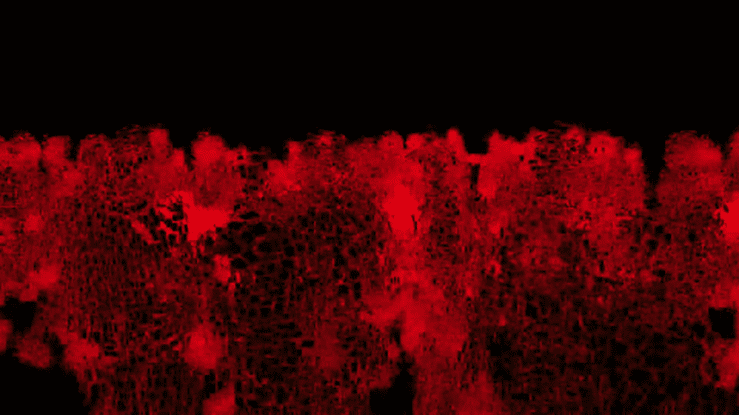
The image of my death I see. La Jetée stages an encounter with death which is wildly reminiscent of the Wolfman’s central dream in his analysis. What is extraordinary about the case is the material that the Wolfman produces under gun point, the forced termination of his analysis by Freud, which drives him back to the central phantasm of his neurosis spurned by a dream where the image of his castration—witnessing his parents’ lovemaking—comes to him in the form of wolves sitting in a tree outside his window. In the logic of dreams, the window opening of its own accord is equivalent to the Wolfman’s eyes opening from sleep onto this dreaded scene of jouissance, and like the quickening of his analysis’ forced termination, the little boy is brought prematurely to fright. The work in analysis can barely hold despite the attempts to have marked this space with letters that his analysis articulates—W, the double V, Roman numeral V, the wings of a butterfly, the legs of a woman kneeling on the floor, the ears of the wolves, all coming to sound the letters S P of the Wolfman’s given name. We shouldn’t be forced to wake up too quickly to this image from the future. Dreams allow us more time to sleep, more time to dream, allow more time for writing and analysis to take place. Freud will not prematurely terminate a treatment again. In any case, it didn’t work. All this beautiful logical material, but his neurosis didn’t budge. It became worse.
Serge Leclaire in A Child is Being Killed condenses the figure of the death drive around the repeated inscription of a letter that we must find ourselves separate from through a work of unbinding ourselves from it, and yet, he says, we must never erase it completely. The staging of this originary scene of inscription and erasure—what he likens to the birth of the unconscious, or the birth of consciousness as differentiated from the unconscious—is where analysis goes, giving to the death drive a place of work. As Leclaire writes, “This is the unthinkable object, the ongoing work, the always focused-on goal of the death drive.” In the regression of analysis we are closer and closer to this edge.
There are, according to Leclaire, secondary representatives of the unconscious, and primary ones: the secondary system arrives, he says, like blurred photographs of UFOs, testifying to the ineptitude of our means of capture and the fixity of these means which become paranoiac institutions. Primary representatives, on the other hand, are for him closer to the letter: the fragments of language, phonemes, bits, that form at best a seemingly illegible string, but which nonetheless can act as a cipher, exhibiting and containing something of the process of annulment, scansion, cutting, that is closer to the death drive itself, and in this is more mobile, stirring, rhythmic, closer to the body and the sexual as such, much like these repeating letters c, k, against the backdrop of an image of extinction.
What analysis attempts to guarantee is that work on these primary representatives has clinical effects. Furthermore, Leclaire says it is always derived from two figures:
Each unconscious representative is made up of a “quantum of instinctual energy,” but it would be futile to imagine that it can be propped up by an atom of conscious representation or a substratum of meaning. It can be identified only by two figures, or two letters, like blood pressure, which can be established only in terms of a relationship. . . . This relationship is stably fixed only because of the permanence of the differential system of which it is both cause and effect, as well as the constancy of the force for which it provides the virtual place.
The minimal figure of two guarantees an alternation, the creation of an interval, and acts as a force of pure tension, granting us, Leclaire says, access to a “quantum of instinctual energy.” On the one hand, we have life/death as the opposition between representation and its repeated force of instantiation, and the unconscious as non-representational force that appears solely in forms of annulment, disappearance, and erasure. On the other hand, the figure of two is the minimal representation possible of the death drive itself as these alternating figures, the opening and closing of the body, the “heteroclite and inconsistent consistency of the sexual” that can appear in analysis. So, we have both the figure of two as the very opposition life/death, and the two as a figuration of the death drive that analysis guarantees and brings to light, the most original and terrifying pulsation of the body and the drive.
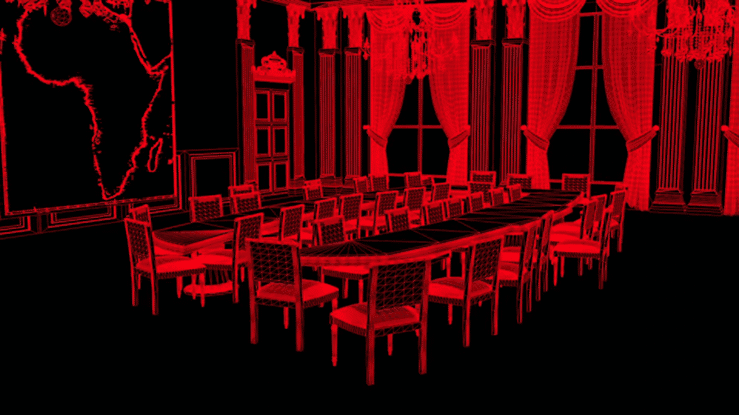
Perhaps the better representation of the death drive, then, is the experience of its strength at the moment of total anxiety—with no object to attach to, no inscription or form, we are taken over by something absolutely threatening from the inside, too heterogeneous to even name. Enter the nightmare! And yet, Leclaire says, no real writing can take place that wouldn’t devolve into an absurdity if it weren’t for the death drive that guarantees non-figuration, that guarantees this figure of two as absolute difference. Again both, or all three. This is why it was so difficult for Freud to get his hands around the death drive which slips around, why he was led into a kind of speculative writing, no less a speculative biology, and why he could only speak about it as a differential system of representation that nevertheless has never found life/death in a pure culture of difference.
There is no peace or leveling of the debt in the fight between the colonizing power of words and representations and the revolt of what is rejected, this play between gift and loss, says Leclaire. Despite this, words in analysis can finally cease to act as a fortress, too much on the side of life and the repeated attempt to achieve an impossible unity and purging of the repressed. By unearthing these primary representatives, signifiers that form a texture beyond the object, desire is brought forward. What analysis creates, says Leclaire, is a wall which can be breached by the subject who is solicited to act as a double agent on both sides of the coin: life/death, unconscious/conscious, body/word, primary/secondary, metonymy/metaphor. This is why the minimal figure of two is so crucial: the subject’s marked experience of moving onto either side, the repeated figures of an unreliable c and the hard mark of k, dream and nightmare.
In any case, isn’t this the meaning of dessication to which the dream adds decimation? To make dry in order to preserve, and to be without passion, drain of emotional or intellectual energy. Sometimes we have to invite the death drive back into desiccated space. And isn’t there something critical here about the death of the individual and the survival of the species, and coral, a complicated biological entity on the border of life and death? And isn’t this the knife’s edge that we walk in analysis—this space where desire blossoms and psychoanalysis becomes hazardous, wary of moving too much on one side or the other, and yet living it through as the always renewable adventure of psychoanalysis—its gift? To end, perhaps we should remember the importance of the infant desiccating the breast, sucking it dry, having it fill back up, and sucking it dry again, animating this organ with its desirous action until one is cut off from it, and it becomes a memory, a trace showing us, as Lacan said, the origin and destiny of all desire:
Destiny, that is to say, man’s relation to the function called desire, only assumes its full vitality inasmuch as the fragmentation of one’s own body, the cut that lies at the locus of select moments of its functioning, is conceivable. . . . The fundamental separtition is what finds itself inscribed right back at the origin, and right back at the level of the oral drive, in what will go on to be the structuring of desire.
1 Chris Marker’s La Jetée is a movie about a man who, as a child, retained the image of a woman’s face at the airport, behind which is the image of a man dying. The movie is set in a post-apocalyptic landscape after World War III, the humans on the brink of extinction. Experiments are being conducted for the purposes of time travel in an attempt to save themselves, and they need to find someone with a strong image in their mind who can use this image to survive the time travel. As the movie’s protagonist travels into the past, he discovers that the man that he had seen die as a child was himself, and the woman watching him, his lover. Because this man is uniquely marked by his individual death, he can survive the torturous experiments and potentially save the species. In this way, the movie is a fascinating rewrite of some of the concerns of Freud in Beyond the Pleasure Principle. As he says in the movie, he will have lived a memory trace twice in order to liquidate himself and save mankind. The movie is famously made from photographs, except for one moving image of a woman sleeping who suddenly opens her eyes.
Lacan, Jacques. The Seminar of Jacques Lacan Book X: Anxiety. Translated by A. R. Price, Polity Press, 2016.
Leclaire, Serge. A Child is Being Killed: On Primary Narcissism and the Death Drive. Translated by Marie-Claude Hays, Stanford UP, 1998.
BEYOND THE NATION STATE I WANT TO DREAM
The video Beyond the Nation State I Want to Dream deals with the construct of nation states and national identity in Europe, examining the binaries and mechanisms of exclusion at work in the constitution of a “we.”
Consisting entirely of slowly decomposing and recomposing computer-generated images, the video juxtaposes apparently innocuous representations of national identity with sites on which the intersection of nationhood, colonialism, and imperial conquest has been made manifest. These sites range from Fort Elmina, the first European settlement in West Africa, to the room in which the 1884 Berlin Conference took place. Such imagery is accompanied by a dream-like monologue in which a narrator attempts in vain to escape from a present in which the historical violence of the nation state is perpetuated in the most mundane aspects of everyday life.
The full length version of Beyond the Nation State I Want to Dream (19:00min) was available to watch until 13 June 2021. It is now presented as a short excerpt and a series of stills and clips.
You are invited to DOWNLOAD THE SCRIPT for the full video here.
JAMIESON WEBSTER writer
Jamieson Webster is a psychoanalyst in New York and author of Conversion Disorder (Columbia, 2018), Stay, Illusion! (Pantheon, 2013), The Life and Death of Psychoanalysis (Routlege, 2011), and is currently working on a new book on Jacques Lacan. She has written often for The New York Times, The New York Review of Books, Artforum, Cabinet Magazine, Spike Art Quarterly, and in many psychoanalytic journals. She currently teaches at The New School for Social Research, and is a member of IPTAR and Das Unbehagen.
DORINE VAN MEEL artist
Dorine van Meel is an artist based between Berlin and Amsterdam. Her practice unfolds in collaborative and discursive projects that result in moving image installations, performances, and workshops. Her solo work has been shown at the South London Gallery (London), the 10th Berlin Biennale for Contemporary Art (Berlin), W139 (Amsterdam), Transmediale (Berlin), Nottingham Contemporary (Nottingham), and KW Institute for Contemporary Art (Berlin). In 2014 she became the fourth recipient of the Nina Stewart Artist Residency at the South London Gallery. She holds an MFA in Fine Art from Goldsmiths College (London). She teaches at the Sandberg Instituut and the Rietveld Academie in Amsterdam and Bard College in Berlin.
Beyond the Nation State I Want to Dream (2018): HD Video, 19:00min. Music and sounds produced and performed by Jesse Osborne-Lanthier and Olle Holmberg. Voiceover by Therese Ladegaard Henningsen.
© Copyright for all texts published in Stillpoint Magazine are held by the authors thereof, and for all visual artworks by the visual artists thereof, effective from the year of publication. Stillpoint Magazine holds copyright to all additional images, branding, design and supplementary texts across stillpointmag.org as well as in additional social media profiles, digital platforms and print materials. All rights reserved.

